15 Wild Animals in Angola [Wildlife in Angola]
Want to know more about the wildlife in Angola?
Discover 15 wild animals in Angola in this post, as well as interesting facts about them. 🇦🇴
Learn All About Angolan Animals
Ready to learn all about Angolan animals?
I’ve always been fascinated by animals, and by how they can be so different from one country to another. In this guide, we’ll focus on the many animals Angola has on the land, in the sky, and underwater.
I’ve split the guide into 5 categories:
- Native animals from Angola
- Endangered animals of Angola
- What is the Angola national animal?
- How many animals native to Angola?
- What has happened to the elephant populations in Angola?
Let’s dive in right away with our first category!
Native Animals from Angola
Angola is a country located on the west coast of Southern Africa. It is bordered by Namibia, the Democratic Republic of Congo, and Zambia, and it is the second-largest Portuguese-speaking country in both population and area. Its capital city is Luanda, which counts more than 2,571,000 inhabitants (but more than 8,330,000 if you include the metropolitan area!).
An interesting part of the country that I wanted to tackle is its wildlife. In light of that, I have listed the best of it, and I hope you will love learning what animals live in Angola.
Here’s the Angola animals list.
1. Giant otter shrew
- Name: Giant otter shrew
- Scientific name: Potamogale velox
- Conservation status:
The giant otter shrew is, like other otters, semi-aquatic and carnivorous. It can only be found in the western part of Central Africa, in the rainforest. Thus, it is present in the northern part of Angola.
This otter lives in freshwater, mostly in fast-flowing rivers and streams. When it comes to breeding and nesting, it often uses river banks to nest and breed. Despite its “Least concern” conservation status, this species is still on the decline, as it is threatened mostly by soil erosion.
2. Aardvark
- Name: Aardvark
- Scientific name: Orycteropus afer
- Conservation status:
What a weird name for a weird animal, at least one not many people (outside of Africa) are used to seeing. Aardvarks are spread throughout most of the continent, from sub-Saharan Africa all the way to South Africa.
The aardvark is a medium-sized nocturnal mammal, and it is definitely unique, being the only living species of the order “Tubulidentata”. It is an insectivore, but opposite to all others, it has a long pig-like snout. It is sometimes called the “African ant bear” as well as the “Cape anteater”.
3. Red-tailed monkey
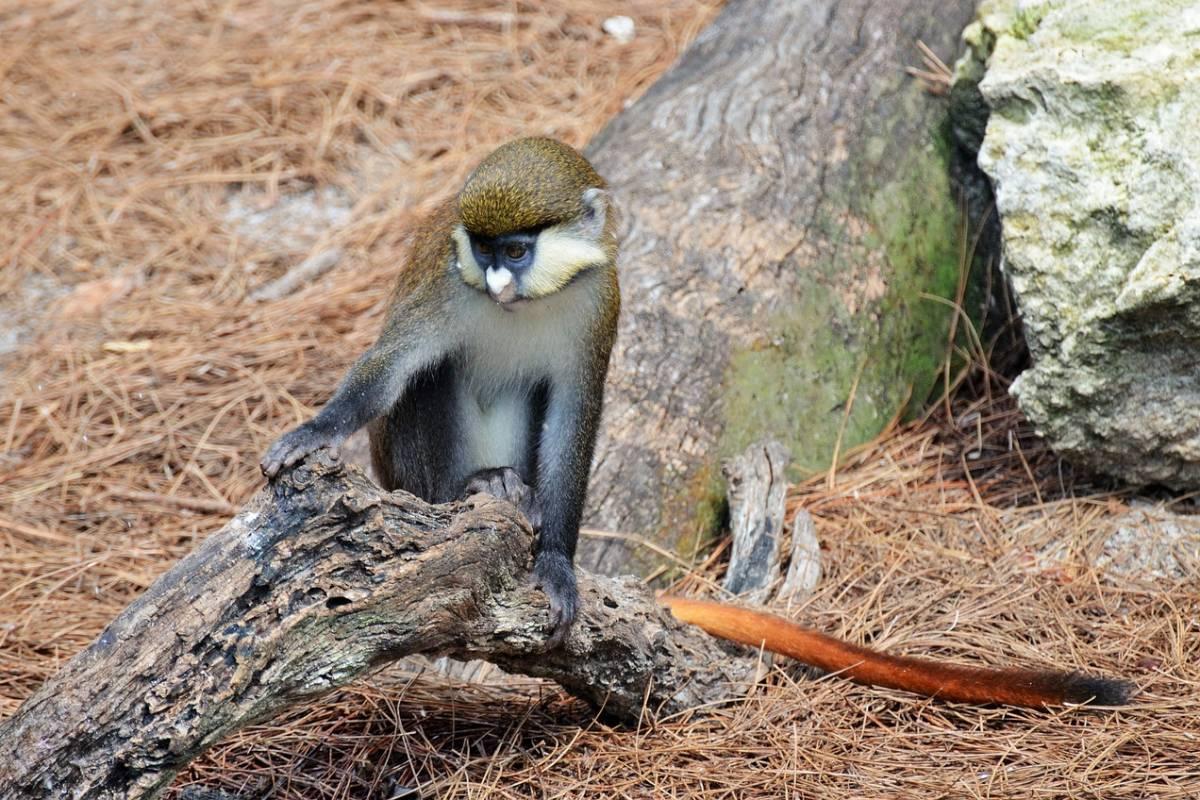
- Name: Red-tailed monkey
- Scientific name: Cercopithecus ascanius
- Conservation status:
The red-tailed monkey is a small primate that can be found in many Central African countries, including Angola, Cameroon, and Kenya. Apart from its tail, it is usually black, orange, or red. Even though it is currently listed as “Least concern”, it is still seriously threatened by deforestation and over-exploitation (hunting and predation).
Not only does this monkey have a red tail, but it also has other specific features, like a white nose and cheeks. Its cheeks are elastic so it can gather and store food in its mouth.
4. Plains zebra
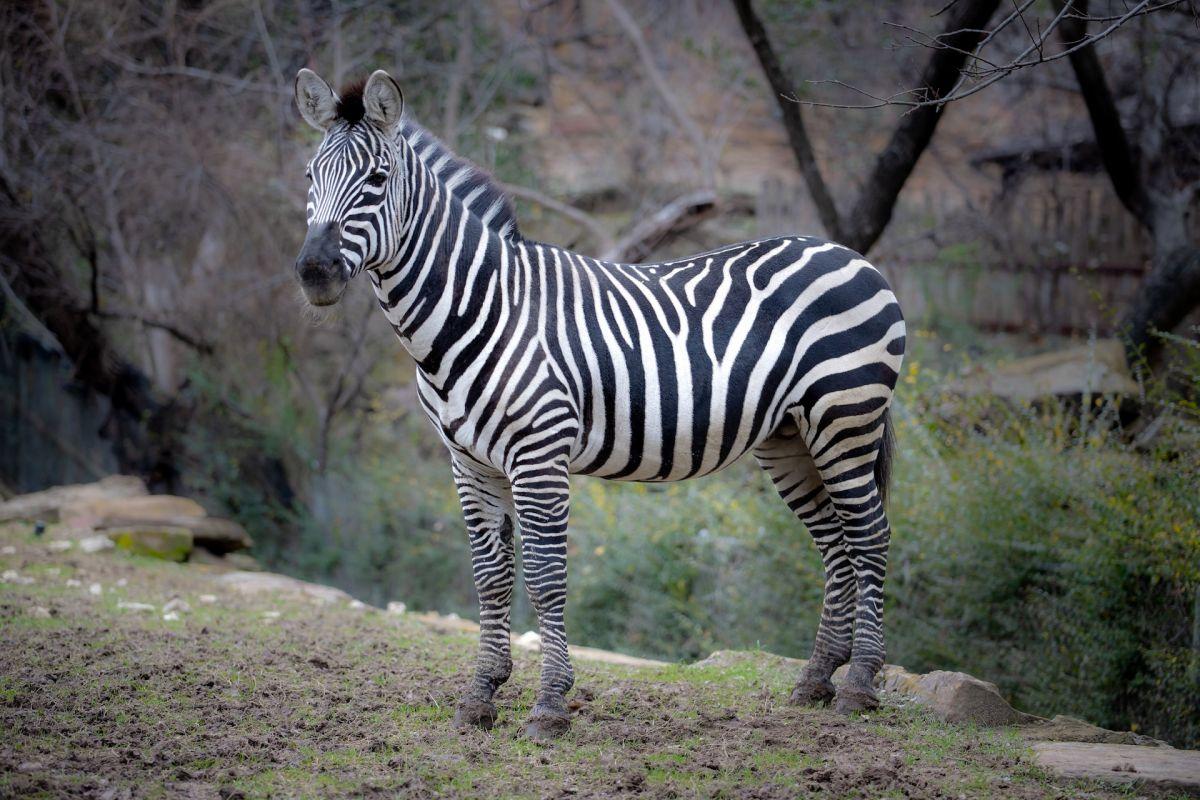
- Name: Plains zebra
- Scientific name: Equus quagga
- Conservation status:
The plains zebra is by far the most common species of zebra, and it can be found in several southern African countries. While it is common in game reserves, it is threatened by hunting and competition with livestock. Fortunately, the population remains stable overall.
Plains zebras are very sociable, and they are always part of a group. This way, they can easily spot predators and warn the whole herd. Sadly, they cannot do much to fight back, and usually have to run away if they are being attacked… and the slowest or weakest of them will often be taken.
5. Chacma baboon
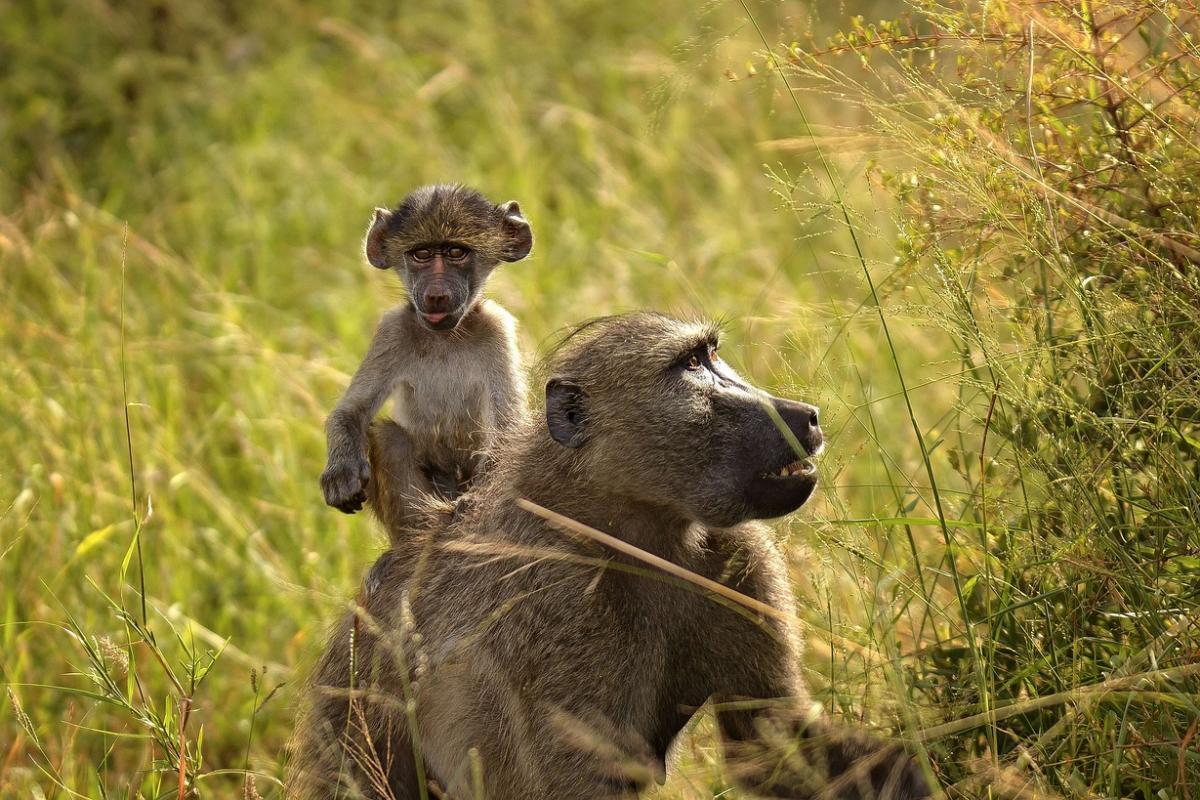
- Name: Chacma baboon
- Scientific name: Papio ursinus
- Conservation status:
The fifth animal on this list is yet another primate: the chacma baboon. It is, in fact, one of the largest monkeys, and while it is mostly present in South Africa, it slowly spread to the North, reaching Angola. This species is overall not threatened, but the sheer pressure of the human population has increased contact between man and animal, which includes hunting, trapping, and accidents.
The chacma baboon mostly feeds on fruits, seeds, and insects, but also bigger prey like birds and rodents.
6. Typical striped grass mouse
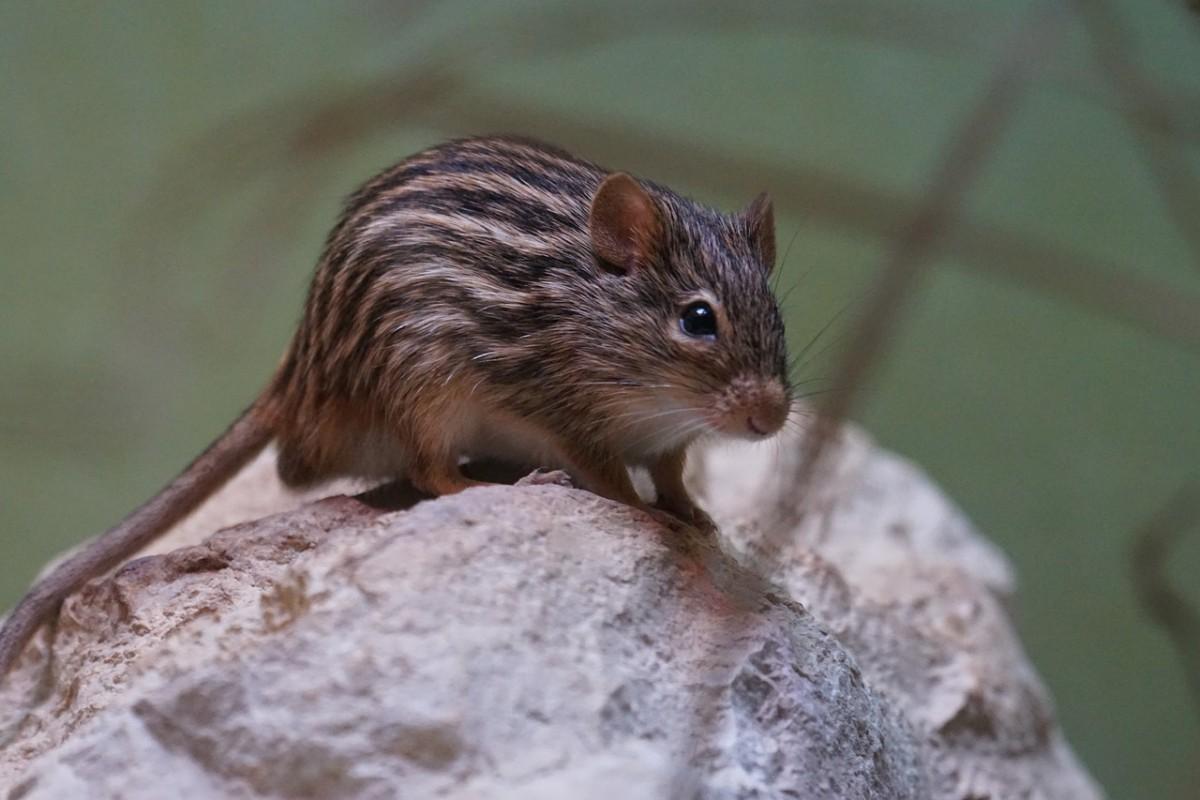
- Name: Typical striped grass mouse
- Scientific name: Lemniscomys striatus
- Conservation status:
The typical striped grass mouse is a small rodent that can be found in several African countries, like Kenya and Angola. Its body is smaller than its tail: from 93 to 142 mm (3.6 to 5.6 in) against from 92 to 155 mm (3.6 to 6.1 in).
This mouse has a black to brown back, with pale dorsal stripes, from the base of its tail all the way up to its neck. It usually lives in deforested areas and grasslands, anywhere from sea level to 1,700 m / 5,577 ft above it.
7. Bryde’s whale
- Name: Bryde’s whale
- Scientific name: Balaenoptera brydei
- Conservation status:
Angola is not all about savanna and notorious African animals: it also has a huge coastline on the Atlantic Ocean… which means there are also tons of sea animals, including the Bryde’s whale. It is the smaller of two species, the other one being “Balaenoptera edeni”, and it can be found mostly in the Pacific.
This whale was named after Johan Bryde, Norwegian consul to South Africa. He helped found the first modern whaling station in the country, which is an organized whale-hunting harbor.
8. African leopard
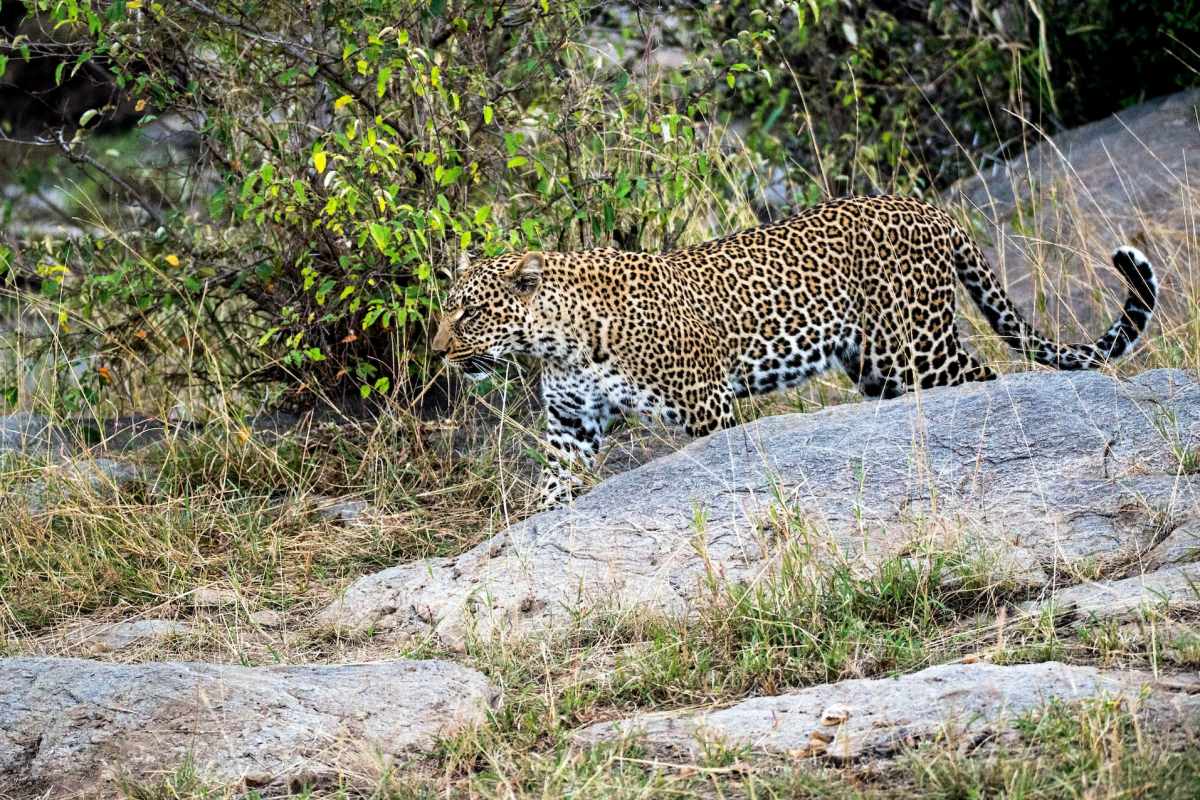
- Name: African leopard
- Scientific name: Panthera pardus pardus
- Conservation status:
The African leopard can be found in most of sub-Saharan Africa, even though its range has been widely modified because of habitat destruction: it was even recorded in North Africa at some point.
African leopards’ colors greatly vary depending on their location as well as their habitat: their fur adapts to the environment in order to make it as discreet as possible, no matter the conditions. Similarly, its diet is very broad, as it adapts itself to whatever it can find. Most of the time, you will see it hunt for antelopes, hares, and hyraxes, however.
9. Spotted hyena
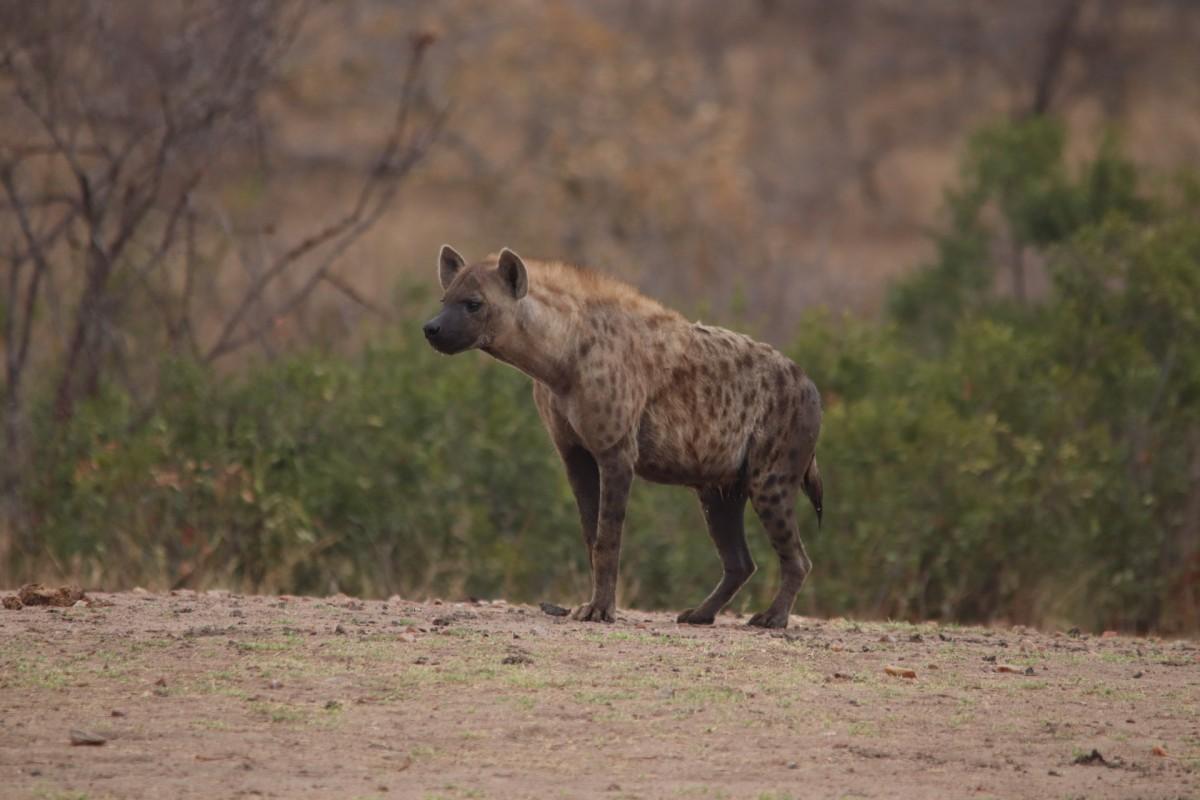
- Name: Spotted hyena
- Scientific name: Crocuta crocuta
- Conservation status:
The spotted hyena is another typical African animal. It is widely known as the “laughing hyena” because of its peculiar cry, very similar to a laugh. It is native to sub-Saharan Africa and can be found in most of it.
This hyena is also the largest of its family, the “Hyaenidae”, and it looks somewhat similar to a bear, with a strong and wide body as well as rounded ears. Interestingly enough, it is the only mammal to lack an external vaginal opening: females have pseudo-penises instead!
10. Bat-eared fox
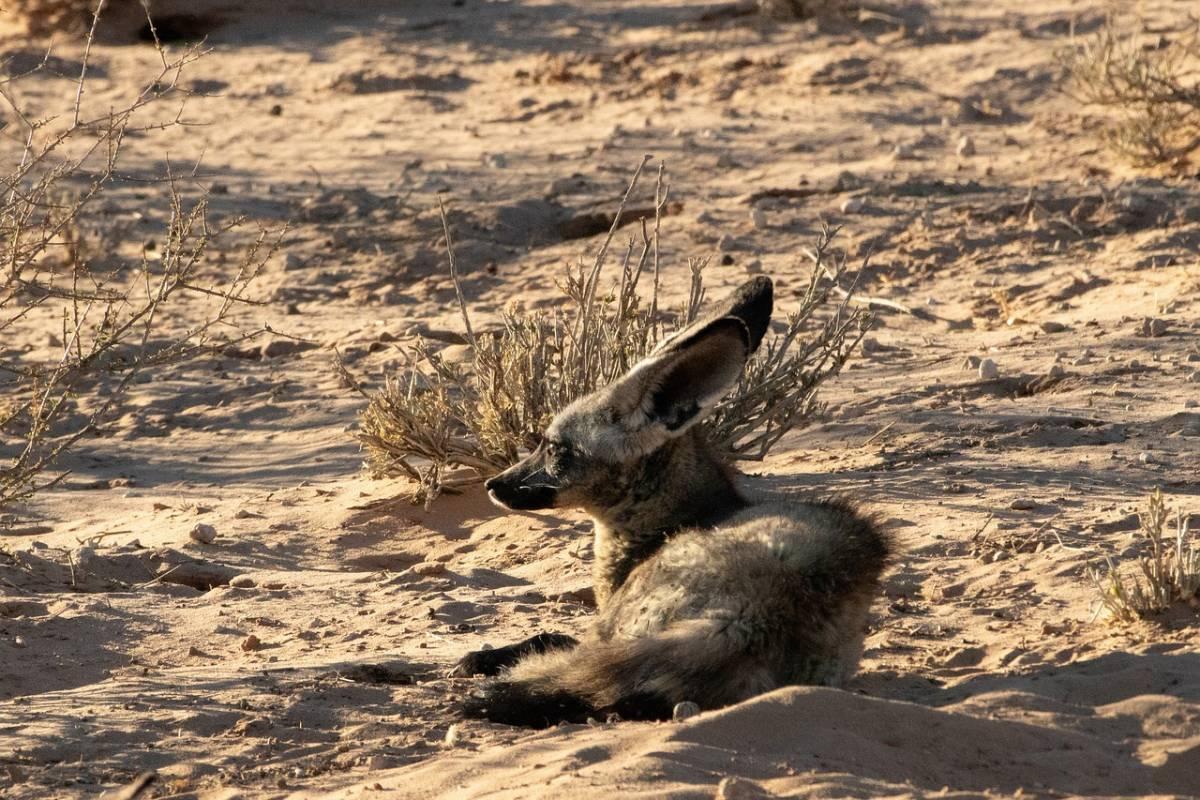
- Name: Bat-eared fox
- Scientific name: Otocyon megalotis
- Conservation status:
Africa has very special animals, even its foxes are very different from the ones that are present in Europe and North America for instance. The bat-eared fox is a great example of that, as it has very large ears, hence its name, and it only lives in the African savanna.
Similarly to the fennec fox that can be found in northern Africa, the unusually large ears are used for thermoregulation. Its fur is tan-colored, mostly ranging from gray to brown variations.
11. Okavango dwarf gecko
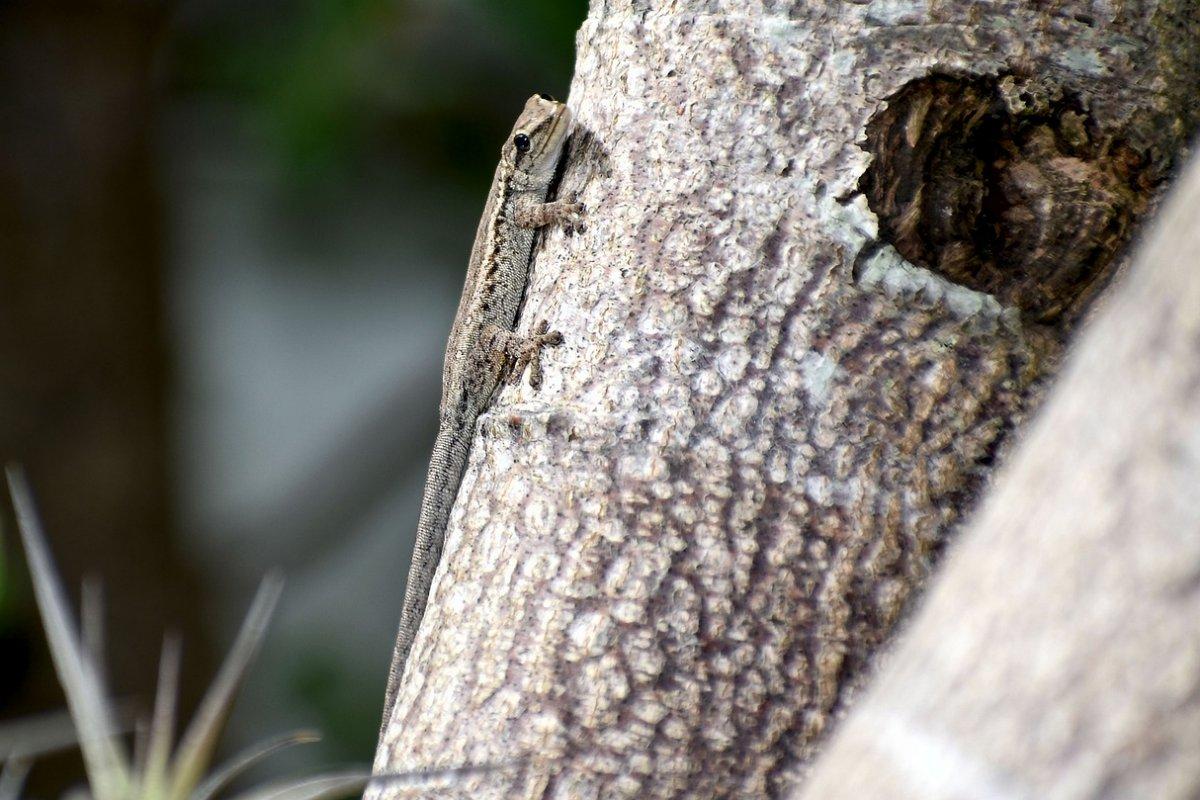
- Name: Okavango dwarf gecko
- Scientific name: Lygodactylus chobiensis
- Conservation status:
The Okavango dwarf gecko is a small species of gecko that can only be found in a very precise region of the world, the Okavango Delta, hence its name. It is also known as the Chobe dwarf gecko, because of the Chobe river. It is thus present in countries like Mozambique, Angola, Zimbabwe, and Zambia.
It is an arboreal animal, and it can be found on tree trunks or flooded grasslands. Its favorite trees are acacias, baobabs and mopanes.
12. Olive marsh snake
- Name: Olive marsh snake
- Scientific name: Natriciteres olivacea
- Conservation status:
The olive marsh snake is another endemic reptile of sub-Saharan Africa, which means it can only be found there. Opposite the Okavango dwarf gecko, it is present in almost every sub-Saharan country.
This snake’s length varies depending on its gender: males have a maximum total length of 27 cm / 11 in, while females can reach up to 33 cm / 13 in. Its dorsal scales are olive, and most of its body is dark olive, which gave it its name. Its ventral color is white, however.
13. Greater flamingo
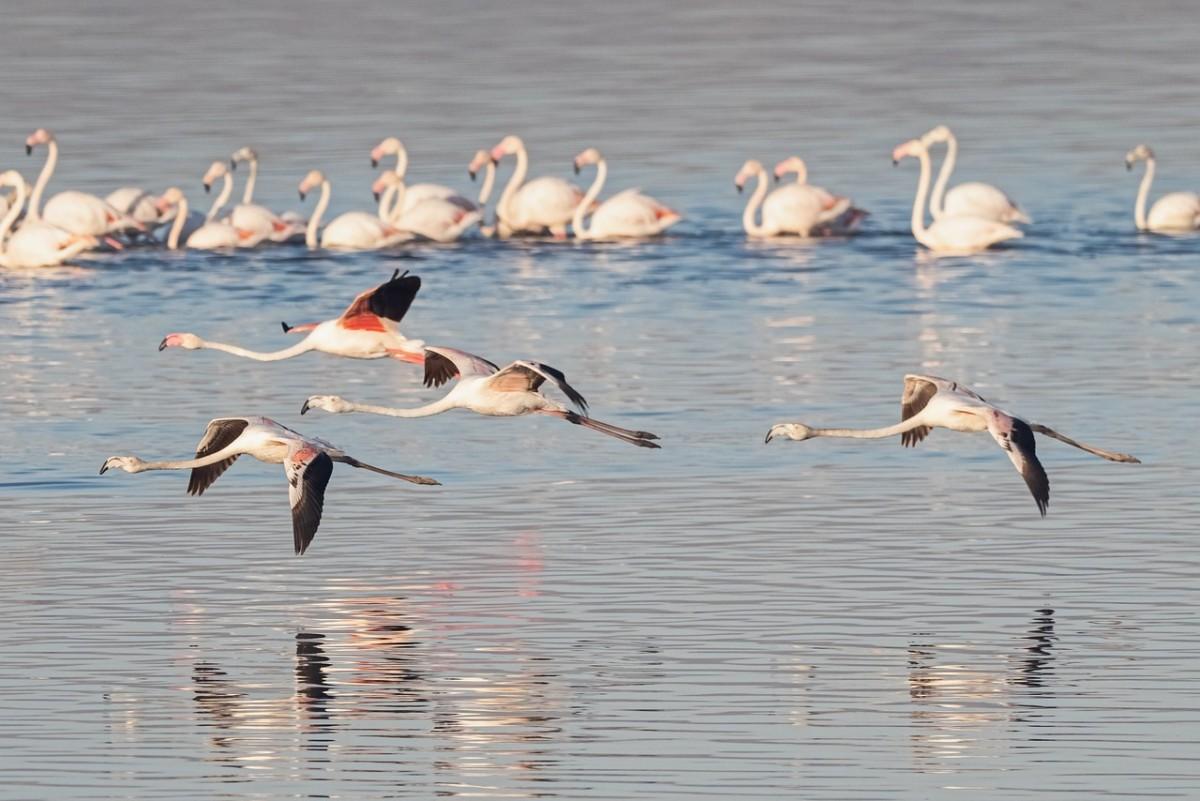
- Name: Greater flamingo
- Scientific name: Phoenicopterus roseus
- Conservation status:
The greater flamingo is arguably the most famous flamingo of all. It is the largest and the most widespread one. It can be found in many parts of the world, from African countries to the Indian subcontinent, without forgetting the Middle East as well as southern Europe.
It was first described by Peter Simon Pallas in 1811, and its average size is 110-150 cm (43-59 in). Some males have even been recorded at up to 187 cm / 74 in!
14. Kori bustard
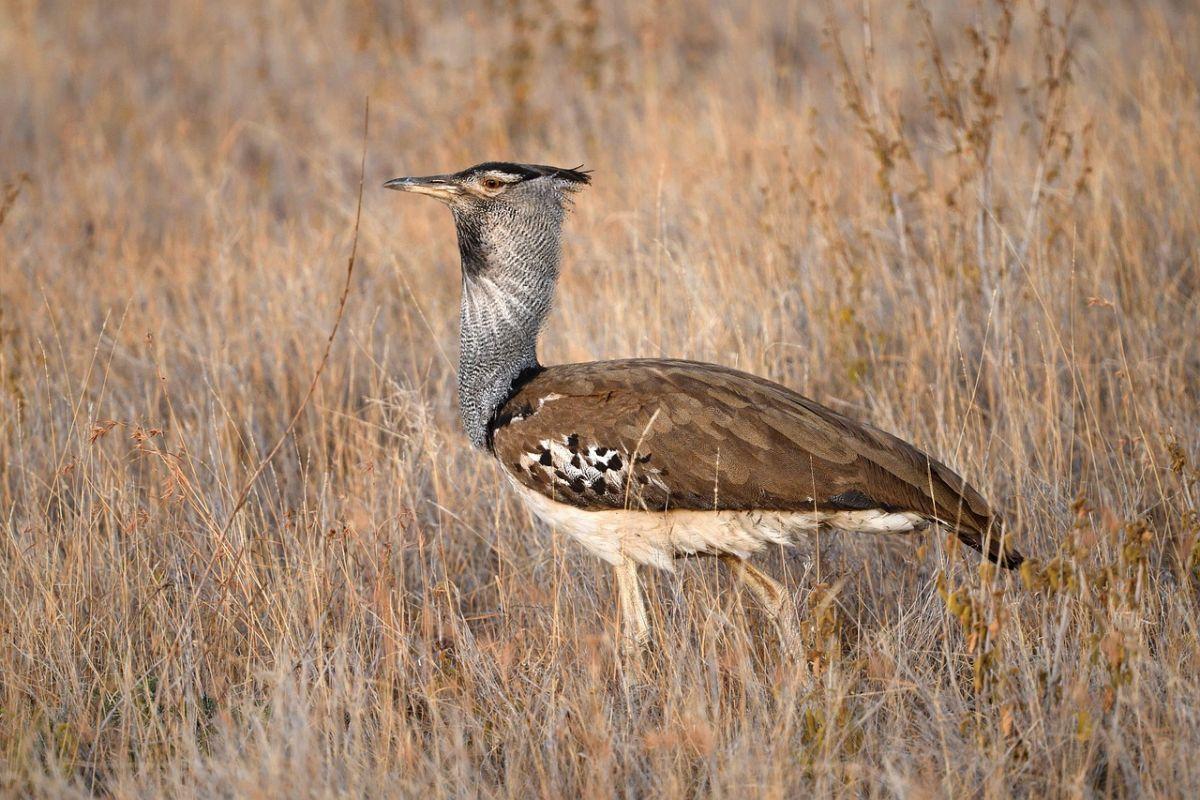
- Name: Kori bustard
- Scientific name: Ardeotis kori
- Conservation status:
Not only is the kori bustard the largest flying bird native to Africa, but males might even be the heaviest living animal capable of flight! Maybe you have never heard of it, but it is a ground-dwelling bird as well as an opportunistic omnivore. Its nest is dug in the earth, usually hidden by objects like trees.
Its colors are most of the time gray and brown, with white on the chest, and it lives in sandy and open grassy areas.
15. African bush elephant
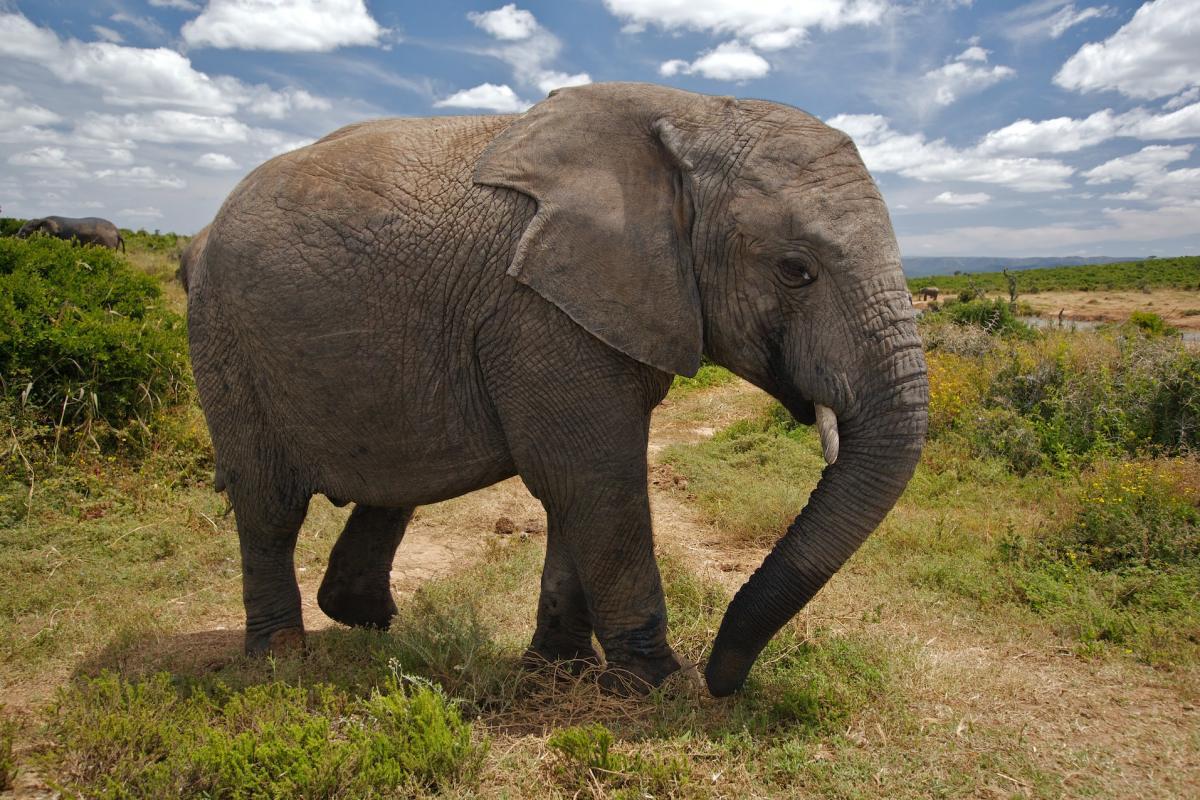
- Name: African bush elephant
- Scientific name: Loxodonta africana
- Conservation status:
The African bush elephant is one of two African elephant species, the other being the African forest elephant. This animal is very famous for being widely hunted for its ivory, and its population severely decreased, mostly due to the civil war. It is now endangered, but more and more laws protect it from poaching.
It is known as the largest and heaviest land animal on the planet, being as high as 3.96 m / 13 ft and as heavy as 10.4 t / 11.5 short tons.
—
So there you have them, these were my 15 wild animals in Angola. I hope you enjoyed this list and that you learned something new today.
In case you want to learn more about Angola wildlife, feel free to keep reading, as I still have lots of things to tell you about:
Endangered Animals of Angola
This is definitely the saddest part of the list, but it is very important to raise awareness. Because of this, let’s go through the list of critically endangered and endangered animals in Angola.
Here are the animals in danger of extinction in Angola.
- Slender-snouted crocodile
- White-backed vulture
- Largetooth sawfish
- Western gorilla
- Black rhino
- and 20 more…
- Swierstra’s Francolin
- Braun’s bush-shrike
- Gabela Akalat
- White-bellied barbet
- Pulitzer’s longbill
- and 3 more…
To see the full list of endangered species in Angola, head over to the International Union for Conservation of Nature’s Red List.
What is the National Animal of Angola?
The national animal of Angola is the Red-crested turaco.
You might not think of a small bird first as the national symbol of Angola, with all its famous animals like elephants and gorillas, but the red-crested turaco has a cry somewhat similar to that of a monkey, so perhaps that is less surprising.
Also, this bird has very bright colors and usually stays up in the trees. It only comes down to drinking and eating and is usually in a group of up to 30 birds.
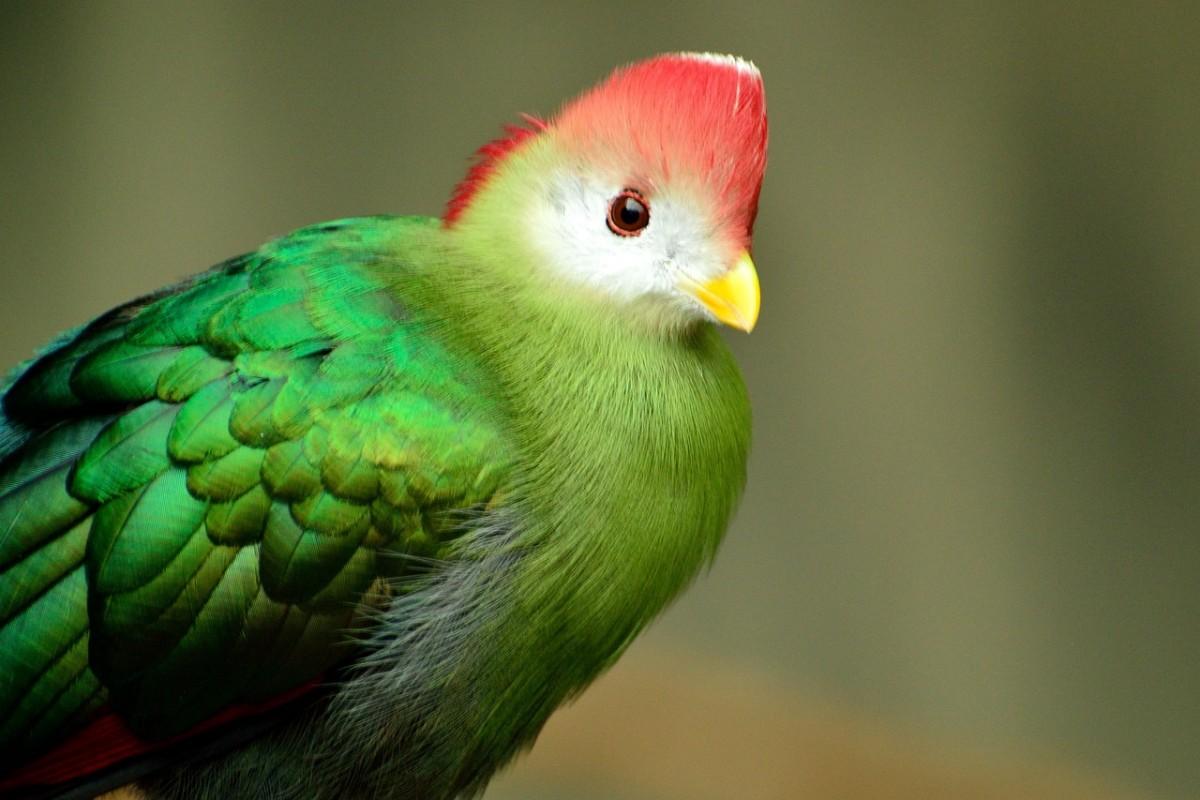
How Many Animals Native to Angola?
What is the diversity of native animals in Angola?
Let’s look at the total number of species of Chordata (mammals, birds, fishes, and reptiles).
Total number of animal species in Angola: 2,821 (14,098 in total in Sub-Saharan Africa)
What has happened to the elephant populations in Angola?
A major part of Angola’s wildlife was severely damaged and even destroyed during the long civil war that ended in 2002. Several thousand elephants survived the massacre, mostly in the southeastern part of the country. Before the war, there used to be more than 100,000 elephants in Angola, but the ivory commerce had a huge impact on the country.
Now, the Angolan government is slowly restoring its wildlife.
More About Animals in the World!
Loved these Angola animal facts? Want to see what animals live in other countries?
Then check out these posts:
Or click here to see ALL the facts up on the blog! Spoiler alert: there’s A LOT of them.
Share the knowledge! Click on the buttons below to share information about these famous animals in Angola with your friends, and help them learn more about the world 🙂
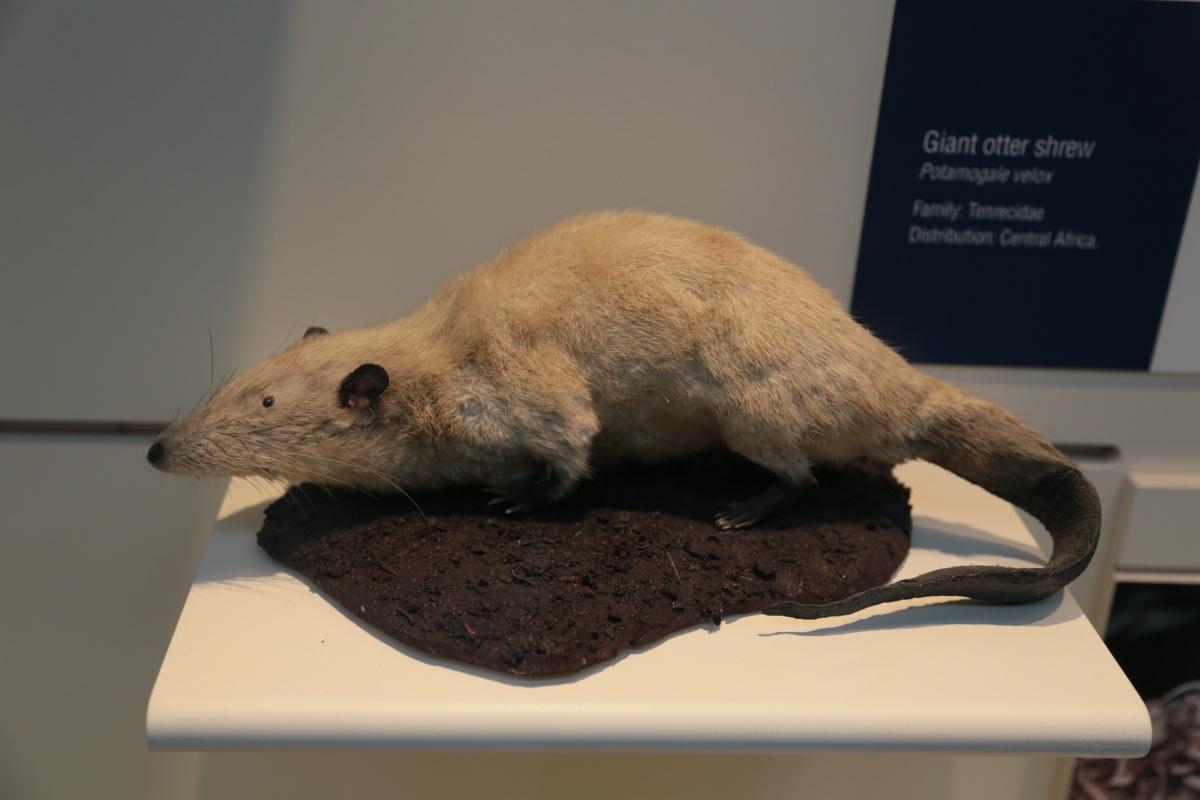
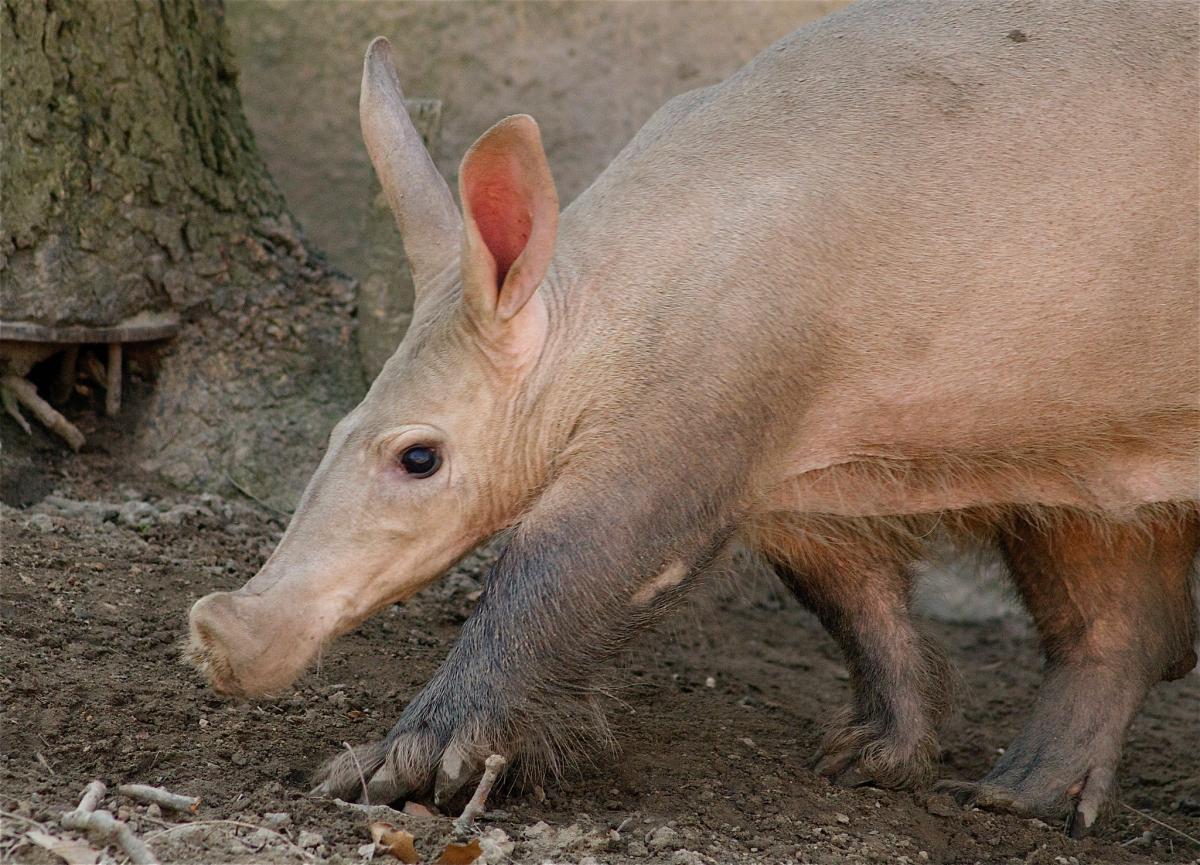
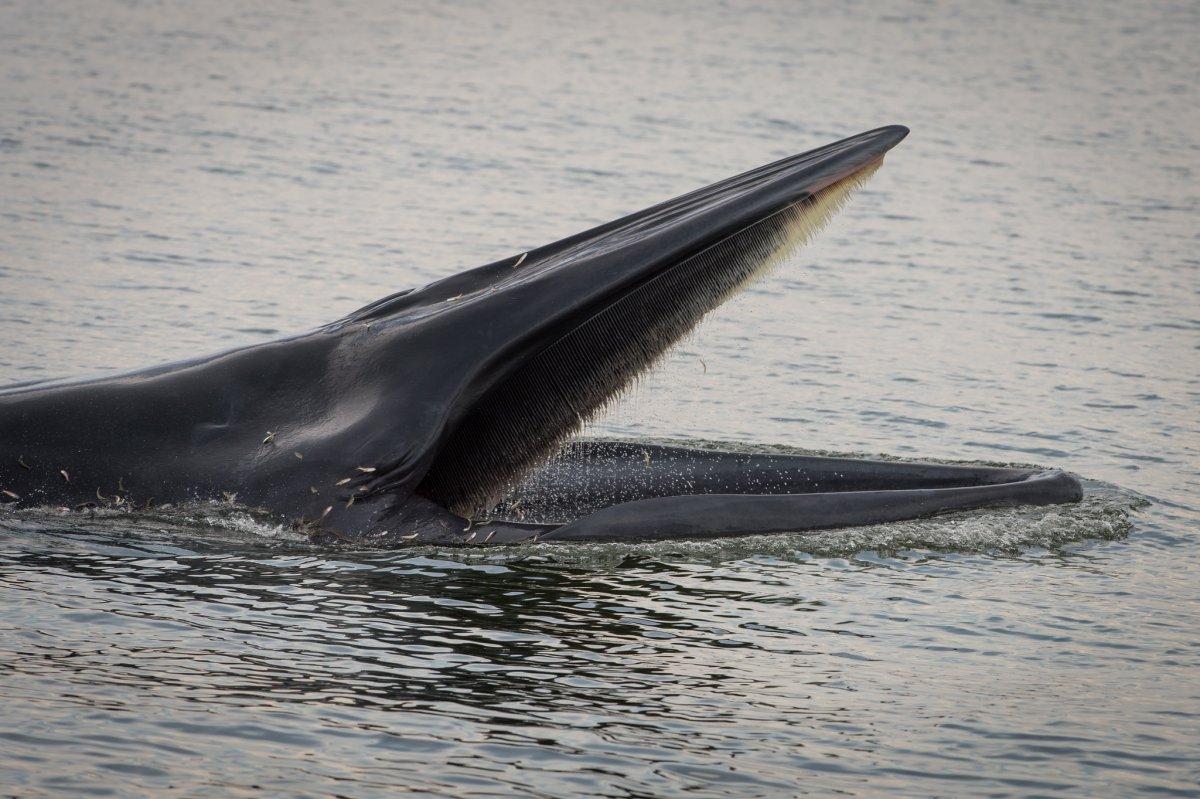

![24 Wild Animals in Namibia [Wildlife in Namibia]](https://www.kevmrc.com/wp-content/uploads/2022/12/24-wild-animals-in-namibia.jpg)
![35 Wild Animals in Colombia [Wildlife in Colombia]](https://www.kevmrc.com/wp-content/uploads/2022/07/35-wild-animals-in-colombia.jpg)
![21 Wild Animals in Switzerland [Wildlife in Switzerland]](https://www.kevmrc.com/wp-content/uploads/2022/11/21-wild-animals-in-switzerland.jpg)